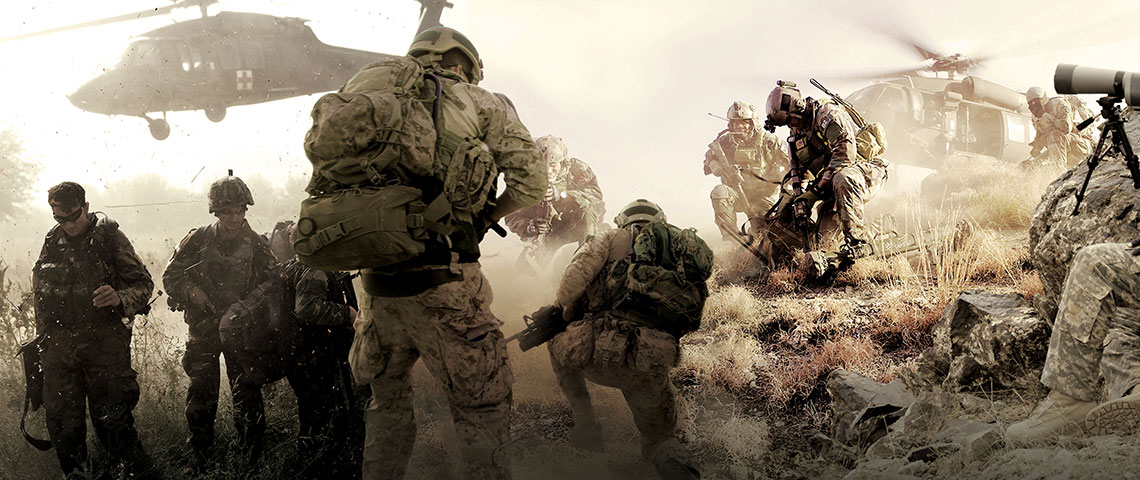From Veritas, Vol. 12, No. 2, 2016
Command levels above CJSOTF
Afghanistan Government/
Iraq related events
11 September, 2001
Terrorists attack targets in the United States. Phase I of Afghanistan Campaign (Liberation of Afghanistan) begins.
14 September
President Bush authorizes call-up of 35,000 Reserves. Congress passes Joint Resolution 23, “Authorization for Use of Military Force Against Terrorists.”
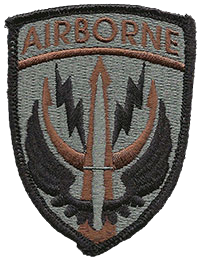
20 September
ARSOF elements deployed to U.S. Central Command (USCENTCOM) in support of Operation ENDURING FREEDOM (OEF). Initially organized into task forces assigned to the Special Operations Command, Central Command (SOCCENT). SOCCENT activates the Combined Forces Special Operations Component Command-Afghanistan (CFSOCC-A) in Qatar.
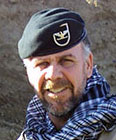
15 October
Joint Special Operations Task Force-North (JSOTF-N) formed from 5th SFG (A), 160th SOAR; USAF 16th SOW; COL John F. Mulholland Jr. commanding. On 23 October JSOTF-N is also designated as Task Force DAGGER, and tasked to conduct Unconventional Warfare (UW) operations in Northern Afghanistan.
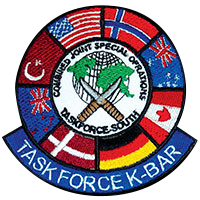
17 October
CFSOCC-A activates Combined Joint Special Operations Task Force-South (CJSOTF-S) from Task Force K-BAR, a unit formed from Naval Special Warfare Group One (NSWG-1) (commanded by Navy Captain Robert S. Harward); ARSOF; and Coalition SOF. CJSOTF-S will deploy to Kandahar in November 2001 to conduct combat operations in that region and along the border with Pakistan.
19 October
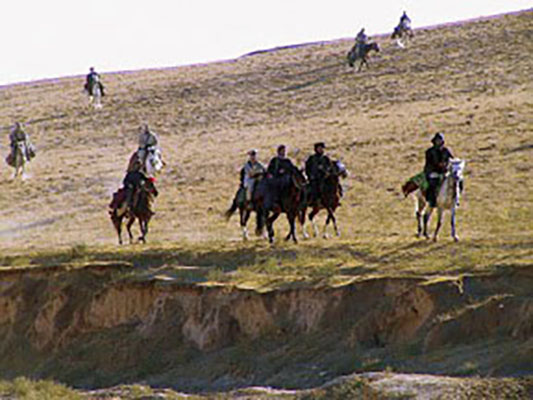
Special Forces (SF) Operational Detachment - Alpha (ODA) 555 and ODA 595 infiltrate into Northern Afghanistan and establish contact with Northern Alliance forces. SOF assists indigenous forces in fighting the Taliban and al Qaeda.
14 November
United Nations Security Council Resolution 1378 invites member nations to provide peacekeeping troops and assist in governing Afghanistan.
30 November
Conflict in Afghanistan shifts from SOF-led effort to conventional fight. Phase II of Afghanistan Campaign and Phase I of Consolidation begin.
6 December
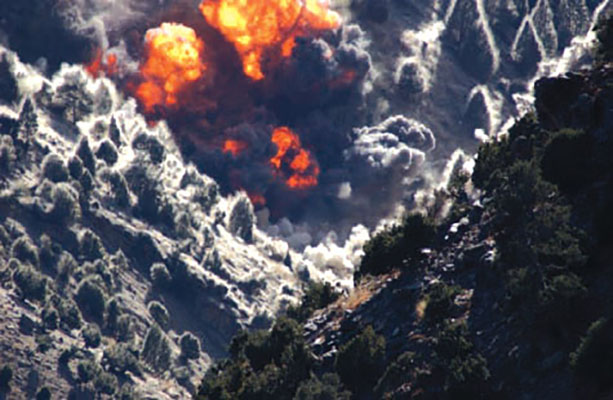
The Battle for Tora Bora begins in the White Mountains of Eastern Afghanistan. The attempt to kill or capture Osama bin Laden, leader of al Qaeda, ends on 17 December with Coalition Forces in control of the area. The al Qaeda leader escaped.

20 December
United Nations Security Council Resolution 1386 authorizes the International Security Assistance Force (ISAF) to help the Afghan Interim Authority maintain security in Kabul and surrounding areas. ISAF later expands to cover all of Afghanistan.
2002
January
USSOCOM tasks 3rd SFG (A) to provide troops and focus on the Afghanistan region.
2 March
Operation ANACONDA, to destroy remaining Taliban fighters in the Shahi-Kot Valley in Paktia Province, commences. It ends on 18 March after inflicting heavy casualties on the Taliban.
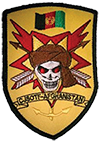
15 March
Afghanistan SOF reorganization occurs. CJSOTF-A formed from CJSOTF-S (TF K-BAR) and JSOTF-N (TF DAGGER). CJSOTF-A is given Operational Control (OPCON) of all Joint SOF and Tactical Control (TACON) of Coalition SOF in Afghanistan. CFSOCC-A inactivated.
30 March
3rd SFG (A) commander COL Mark V. Phelan assumes command of CJSOTF-A at Bagram Airbase, Afghanistan.
28 May

COL Joseph D. Celeski takes command of 3rd SFG (A) and CJSOTF-A. This begins a rotational pattern in transferring CJSOTF-A responsibilities.
13 June
Loya Jirga appoints Hamid Karzai as Interim President.
18 September
20th SFG (A) assumes CJSOTF-A mission for six months.
2003
20 March
U.S. begins the invasion of Iraq. Operation Iraqi Freedom becomes the main effort in the Global War on Terror; units in Afghanistan must compete for resources, support, and funding.
4 June
Task Force PHOENIX activated, assumes former CJSOTF-A mission as primary trainer of the Afghan National Army.
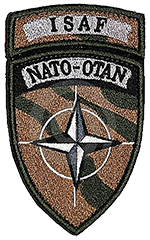
11 August
North Atlantic Treaty Organization (NATO) assumes responsibility for ISAF in and around Kabul.
7 November
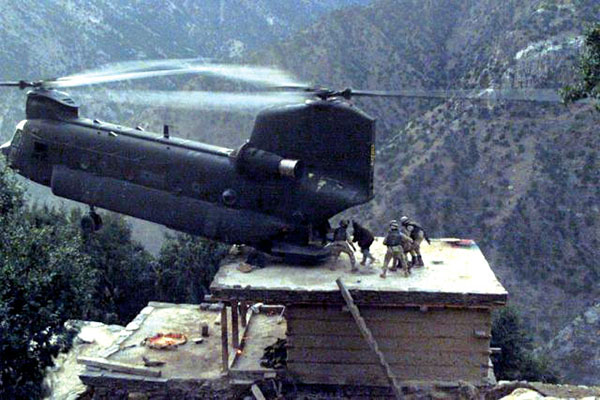
CJSOTF-A supports the 10th Mountain Division in Operation MOUNTAIN RESOLVE. For about a month, CJSOTF-A elements serve as the ‘anvil’ in a conventional force-led ‘hammer and anvil’ operation.
14 December
Constitutional Loya Jirga begins Afghanistan self-rule.
2004
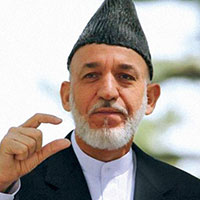
9 October
Afghanistan holds first democratic elections. Hamid Karzai becomes first democratically elected President of Afghanistan.
2006
30 September
The North Atlantic Treaty Organization (NATO)/ISAF assumes responsibility for security over all of Afghanistan. Phase III of Afghanistan Campaign and Phase II of Consolidation begin.
2007
10 January
U.S. announces plans for a troop surge in Iraq.

24 July
First ANA Commando Kandak graduates at Camp Morehead.
2008
17 November
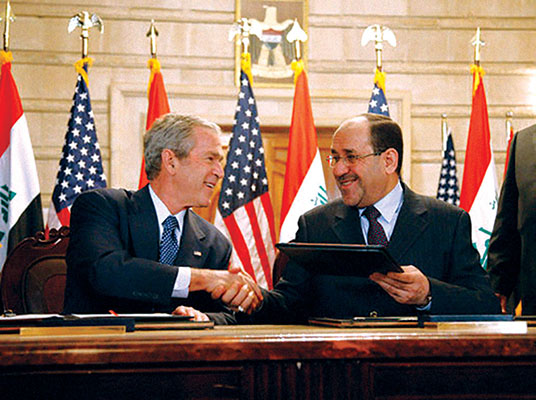
Signing of U.S.-Iraq Status of Forces Agreement (SOFA) sets the date for all U.S. Forces to be out of Iraq: 31 December 2011.
2009
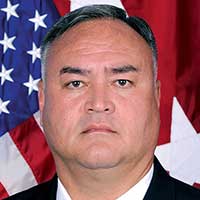
31 January
CFSOCC-A re-established in Afghanistan under the command of BG Edward M. Reeder Jr. Coalition Force numbers increased in Afghanistan as troop numbers in Iraq decreased. The increase in ISAF headquarters levels result in a flag rank command to conduct SOF planning and coordination.
CJSOTF-A is OPCON to CFSOCC-A.
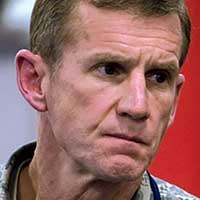
15 June
GEN Stanley A. McChrystal assumes command of ISAF. Develops and implements a strategy for population-centric counterinsurgency (COIN).
July
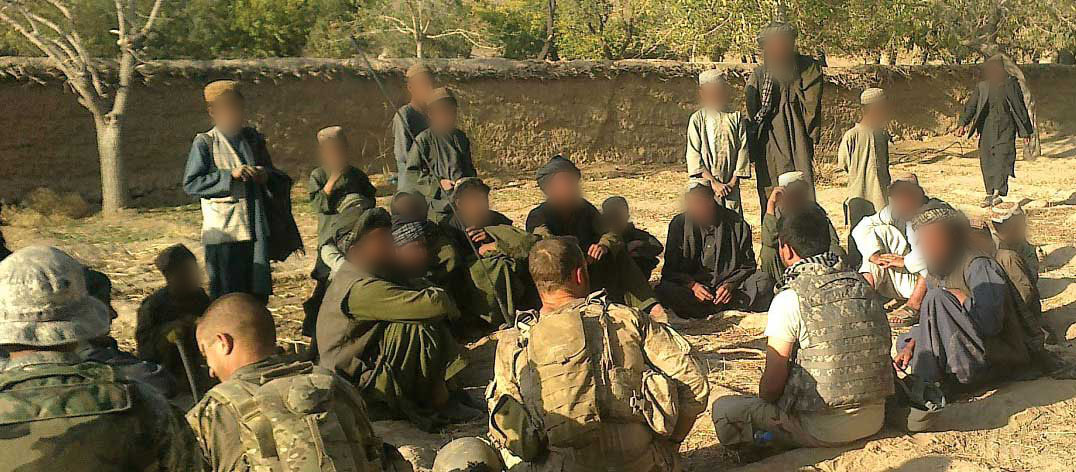
CFSOCC-A and CJSOTF-A establish the first Community Defense Initiative (CDI) site at Nili village, Daykundi Province (SF ODA 7224). CDI later becomes Local Defense Initiative (LDI), and by 2010 is commonly called Village Stability Operations (VSO).
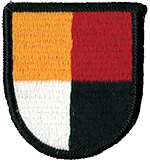
21 August
USSOCOM assigns 3rd Special Forces Group primary responsibility for Afghanistan region. It formalized SF assignment of regions in the Middle East. The directive also stabilized tour lengths. 7th Group to assist in that responsibility.
30 November
President Barack Obama authorizes an increase of 30,000 U.S. forces in Afghanistan, raising the total to 100,000.
Phase IV of Afghanistan Campaign (Consolidation III) begins 1 December 2009.
2010
1 April
A realignment is made where CFSOCC-A becomes OPCON to ISAF. CJSOTF-A is still commanded by CFSOCC-A, but its subordinate SOTFs are placed in direct support of the conventional force Regional Commands (RCs). CJSOTF-A continues to conduct Village Stability Operations (VSO) and FID as primary missions.
13 May
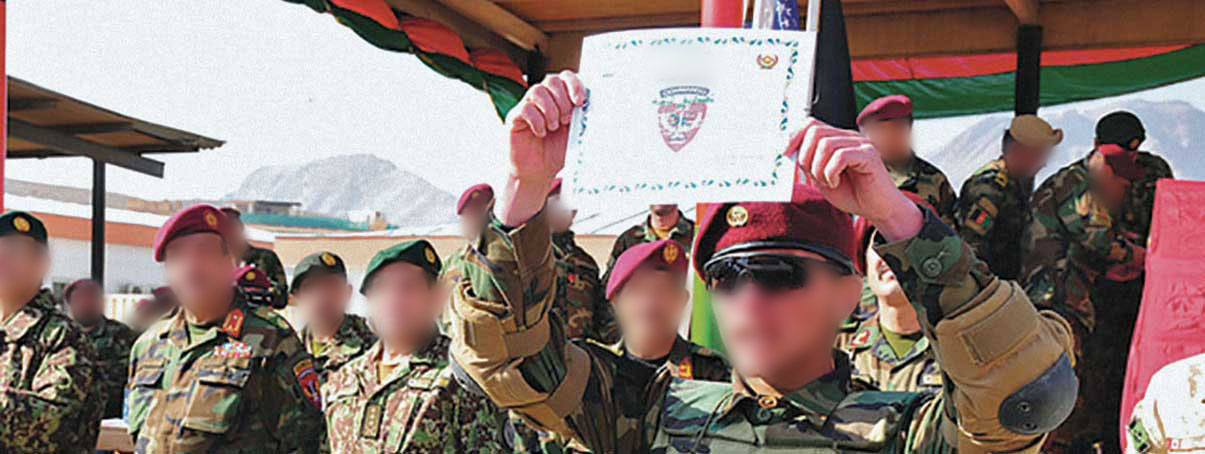
First ANA Special Forces Qualification Course graduates at Camp Morehead.
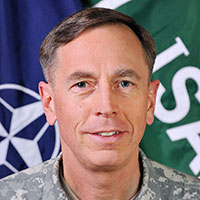
4 July
GEN David H. Petraeus assumes command of U.S. and ISAF forces in Afghanistan.
20 November
NATO nations agree to the Lisbon Summit to transfer security responsibilities to Afghanistan and withdraw NATO combat forces by the end of 2014.
2011
2 May

Operation NEPTUNE SPEAR, the mission to capture or kill Osama bin Laden, is successful. Bin Laden killed in raid on his house in Abbottabad, Pakistan.
22 June
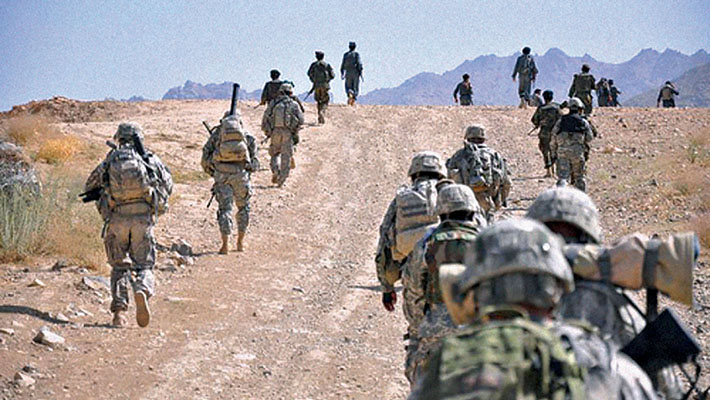
President Barack Obama announces plans for a drawdown of U.S. forces in Afghanistan and a plan to transfer all security responsibilities to Afghanistan forces by the end of 2014.
30 June
Phase V of Afghanistan Campaign (Transition I) begins 1 July 2011.
18 December
Last U.S. forces depart Iraq. Attention and priorities shift back to Afghanistan.
2012
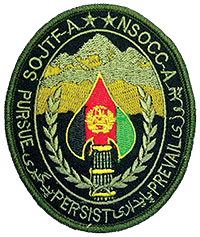
1 July
CFSOCC-A transitions to NATO Special Operations Component Command-Afghanistan (NSOCC-A)/Special Operations Joint Task Force-Afghanistan (SOJTF-A), a two-star headquarters (MG Raymond A. ‘Tony’ Thomas III) with command authority over all Allied SOF in Afghanistan.
2013
18 June
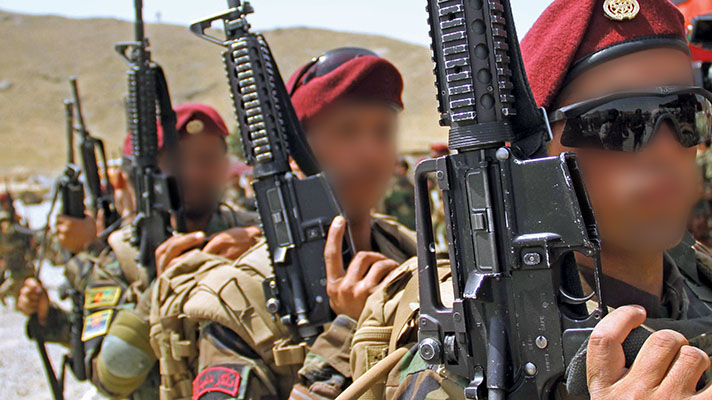
Afghanistan National Army (ANA) assumes responsibility from NATO forces for all military and security operations.
2014
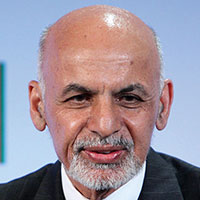
29 September
New Afghanistan government: Dr. Ashraf Ghani elected as Afghanistan President; Dr. Abdullah Abdullah becomes Chief Executive Officer.
30 September
New Afghanistan government signs Bilateral Security Agreement and SOFA.
31 October
CJSOTF-A deactivated at Camp Vance, Bagram Airbase, Afghanistan.
1 November
Special Operations Task Force-Afghanistan (SOTF-A) assumes command of all U.S. SOF assigned to advise-assist missions in the country. It remains OPCON to SOJTF-A.
31 December
United States ends all direct combat operations in Afghanistan. Phase V of Afghanistan Campaign (and Operation ENDURING FREEDOM) ends.
2015
1 January
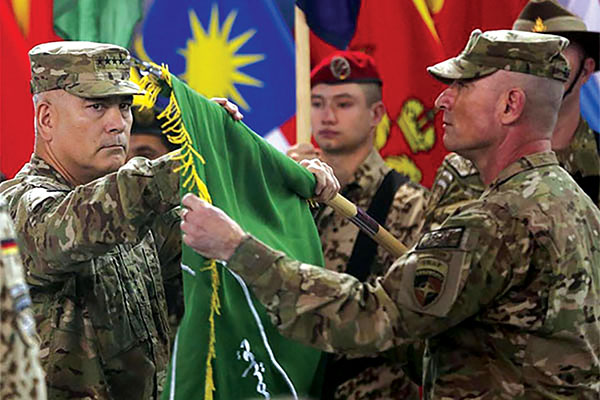
Transition II (and Operation FREEDOM’S SENTINEL) begins .
